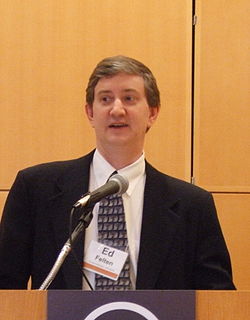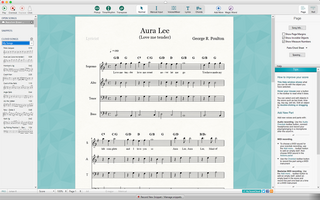Related Research Articles
Windows Media Audio (WMA) is a series of audio codecs and their corresponding audio coding formats developed by Microsoft. It is a proprietary technology that forms part of the Windows Media framework. WMA consists of four distinct codecs. The original WMA codec, known simply as WMA, was conceived as a competitor to the popular MP3 and RealAudio codecs. WMA Pro, a newer and more advanced codec, supports multichannel and high resolution audio. A lossless codec, WMA Lossless, compresses audio data without loss of audio fidelity. WMA Voice, targeted at voice content, applies compression using a range of low bit rates. Microsoft has also developed a digital container format called Advanced Systems Format to store audio encoded by WMA.
Windows Media Video (WMV) is a series of video codecs and their corresponding video coding formats developed by Microsoft. It is part of the Windows Media framework. WMV consists of three distinct codecs: The original video compression technology known as WMV, was originally designed for Internet streaming applications, as a competitor to RealVideo. The other compression technologies, WMV Screen and WMV Image, cater for specialized content. After standardization by the Society of Motion Picture and Television Engineers (SMPTE), WMV version 9 was adapted for physical-delivery formats such as HD DVD and Blu-ray Disc and became known as VC-1. Microsoft also developed a digital container format called Advanced Systems Format to store video encoded by Windows Media Video.

Edward William Felten is the Robert E. Kahn Professor of Computer Science and Public Affairs at Princeton University, where he was also the Director of the Center for Information Technology Policy from 2007 to 2015 and from 2017 to 2019. On November 4, 2010, he was named Chief Technologist for the Federal Trade Commission, a position he officially assumed January 3, 2011. On May 11, 2015, he was named the Deputy U.S. Chief Technology Officer.
High Definition Compatible Digital (HDCD) is a proprietary audio encode-decode process that claims to provide increased dynamic range over that of standard Red Book audio CDs, while retaining backward compatibility with existing compact disc players.

A digital watermark is a kind of marker covertly embedded in a noise-tolerant signal such as audio, video or image data. It is typically used to identify ownership of the copyright of such signal. "Watermarking" is the process of hiding digital information in a carrier signal; the hidden information should, but does not need to, contain a relation to the carrier signal. Digital watermarks may be used to verify the authenticity or integrity of the carrier signal or to show the identity of its owners. It is prominently used for tracing copyright infringements and for banknote authentication.

Windows Vista is a major release of the Windows NT operating system developed by Microsoft. It was the direct successor to Windows XP, which was released five years prior, at the time being the longest time span between successive releases of Microsoft Windows desktop operating systems. Development was completed on November 8, 2006, and over the following three months, it was released in stages to computer hardware and software manufacturers, business customers and retail channels. On January 30, 2007, it was released internationally and was made available for purchase and download from the Windows Marketplace; it is the first release of Windows to be made available through a digital distribution platform.
RhythmOne plc, previously known as Blinkx, and also known as RhythmOne Group, is an American digital advertising technology company that owns and operates the web properties AllMusic, AllMovie, and SideReel.
Gerald "Gerry" Kearby was an entrepreneur who rose to prominence during the "dot-com" boom of the late 1990s. He worked predominantly with music and audio-related electronics and software companies.

Zune is a discontinued line of digital media products and services marketed by Microsoft from November 2006 until its discontinuation in June 2012. Zune consisted of a line of portable media players, digital media player software for Windows PCs, a music subscription service known as a "Zune Music Pass", music and video streaming services for the Xbox 360 game console via the Zune Software, music, TV and movie sales, and desktop sync software for Windows Phone. Zune was also the provider of music streaming for United Airlines in-flight, after a partnership in 2010.
Windows Vista, an operating system released by Microsoft for consumers on January 30, 2007, has been widely criticized by reviewers and users. Due to issues with new security features, performance, driver support and product activation, Windows Vista has been the subject of a number of negative assessments by various groups.

HD DVD is a discontinued high-density optical disc format for storing data and playback of high-definition video. Supported principally by Toshiba, HD DVD was envisioned to be the successor to the standard DVD format.
Microsoft PixelSense is an interactive surface computing platform that allows one or more people to use and touch real-world objects, and share digital content at the same time. The PixelSense platform consists of software and hardware products that combine vision based multitouch PC hardware, 360-degree multiuser application design, and Windows software to create a natural user interface (NUI).
Video fingerprinting or video hashing are a class of dimension reduction techniques in which a system identifies, extracts, and then summarizes characteristic components of a video as a unique or a set of multiple perceptual hashes, enabling that video to be uniquely identified. This technology has proven to be effective at searching and comparing video files.
Digital rights management (DRM) tools or technological protection measures (TPM) are a set of access control technologies for restricting the use of proprietary hardware and copyrighted works. DRM technologies try to control the use, modification, and distribution of copyrighted works, as well as systems within devices that enforce these policies.
Civolution is a provider of technology and services for identifying, managing and monetizing audio and video media content. The company offers a portfolio of proprietary and patented digital watermarking and digital audio and video fingerprinting technology for media protection: forensic tracking of media assets in pre-release, digital cinema, Pay Television and online; media intelligence: audience measurement, broadcast monitoring, internet and radio tracking; media interaction: automatic content recognition and triggering for second screen and connected television.

Cinavia, originally called Verance Copy Management System for Audiovisual Content (VCMS/AV), is an analog watermarking and steganography system under development by Verance since 1999, and released in 2010. In conjunction with the existing Advanced Access Content System (AACS) digital rights management (DRM) inclusion of Cinavia watermarking detection support became mandatory for all consumer Blu-ray Disc players from 2012.
ActivePresenter is a screencasting and eLearning software for Microsoft Windows and Mac OS X which can be used to create software demonstrations, software simulations, and quizzes. It allows exporting to a series of images, HTML slideshows, documents, Microsoft PowerPoint presentations, videos, Flash videos and interactive simulations. For eLearning, ActivePresenter can pack exported materials into SCORM or xAPI. For software simulations, it can use mouse hovers, left or right mouse clicks, and key presses with modifier keys.

Microsoft Product Activation is a DRM technology used by Microsoft Corporation in several of its computer software programs, most notably its Windows operating system and its Office productivity suite. The procedure enforces compliance with the program's end-user license agreement by transmitting information about both the product key used to install the program and the user's computer hardware to Microsoft, inhibiting or completely preventing the use of the program until the validity of its license is confirmed.

ScoreCloud is a software service and web application for creating, storing, and sharing music notation, created by Doremir for macOS, Microsoft Windows, iPhone and iPad.
Automatic content recognition (ACR) is a technology to identify content played on a media device or present within a media file. Devices implementing ACR can allow the device or its manufacturer to collect content consumption information automatically "at the screen level" without any user-based input or search effort. This information may be collected for purposes such as personalized advertising, content recommendation, or for sale to customer data aggregators, and for other applications.
References
- ↑ "Activated Content Licenses Microsoft Technology to Enhance Audio Watermarking Efforts" (Press release). Microsoft. 7 August 2007. Archived from the original on February 24, 2008.
- ↑ "Wired Magazine". August 20, 2007. Archived from the original on May 17, 2008.
- ↑ "Deal may lead to free but "watermarked" music".